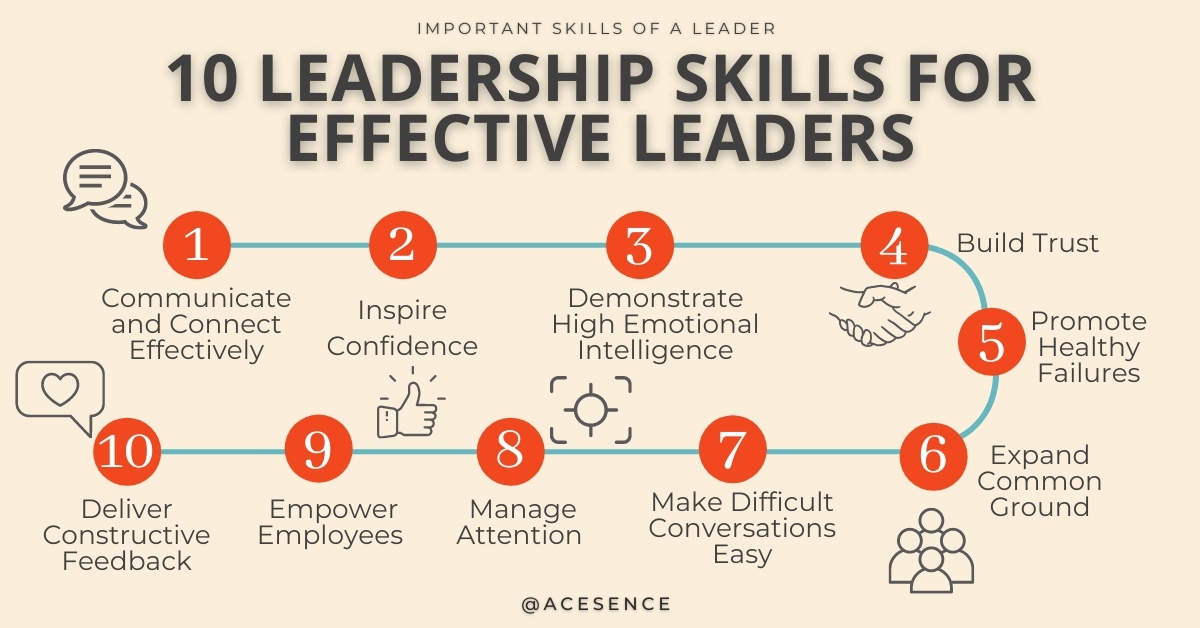Effective leadership is crucial for organizational success, and developing leadership skills within your team can drive innovation, enhance productivity, and create a positive work environment. Cultivating leadership abilities in your team members not only prepares them for future roles but also contributes to a more dynamic and engaged workforce. Here’s a comprehensive guide on how to develop leadership skills in your team.
1. Identify Potential Leaders
1.1. Observe and Assess
Action: Look for team members who demonstrate initiative, problem-solving abilities, and a willingness to take on challenges. Observe their interactions, decision-making skills, and how they handle responsibilities.
Tools: Use performance reviews, feedback from peers, and self-assessments to identify potential leaders.
1.2. Conduct Skill Assessments
Action: Use leadership competency frameworks and assessments to gauge the current skills and potential of team members.
Tools: Utilize tools like 360-degree feedback, leadership assessments, and personality tests to evaluate leadership traits.
2. Provide Opportunities for Growth
2.1. Offer Leadership Training
Action: Enroll team members in leadership development programs, workshops, and seminars. Provide access to online courses and certifications relevant to their career aspirations.
Tools: Use platforms like LinkedIn Learning, Coursera, or specialized leadership training providers.
2.2. Encourage Job Rotation
Action: Allow team members to take on different roles or projects within the organization. This exposes them to various aspects of the business and develops their leadership skills.
Tools: Create a job rotation schedule and provide mentorship during transitions.
3. Mentorship and Coaching
3.1. Pair with Experienced Leaders
Action: Assign mentors from within or outside the organization to guide potential leaders. Encourage regular meetings to discuss goals, challenges, and career development.
Tools: Implement a formal mentorship program and use mentorship tracking tools.

3.2. Provide One-on-One Coaching
Action: Offer personalized coaching to help team members develop specific leadership skills. Focus on areas such as communication, conflict resolution, and strategic thinking.
Tools: Utilize coaching frameworks and tools to track progress and set actionable goals.
4. Empower with Responsibilities
4.1. Delegate Meaningful Projects
Action: Give team members responsibility for projects or initiatives that challenge them and require leadership. Allow them to lead teams or manage key tasks.
Tools: Use project management tools to assign tasks and track progress.
4.2. Encourage Decision-Making
Action: Involve team members in decision-making processes. Provide opportunities for them to make decisions and learn from the outcomes.
Tools: Implement decision-making frameworks and encourage feedback sessions.
5. Foster a Culture of Leadership
5.1. Recognize and Reward
Action: Acknowledge and reward leadership efforts and achievements. Celebrate successes and milestones to motivate and reinforce positive behavior.
Tools: Use recognition platforms, awards, and public acknowledgments to highlight accomplishments.
5.2. Promote Continuous Learning
Action: Encourage a culture of continuous improvement by supporting ongoing learning and development. Provide resources for leadership development and foster a growth mindset.
Tools: Offer access to books, articles, webinars, and industry conferences.
6. Lead by Example
6.1. Demonstrate Leadership
Action: Model effective leadership behaviors and practices. Show how to handle challenges, communicate effectively, and make decisions.
Tools: Use leadership development programs and self-assessment tools to refine your own leadership skills.
6.2. Share Leadership Experiences
Action: Share your experiences, successes, and failures with your team. Discuss lessons learned and how they can apply these lessons to their own development.
Tools: Use team meetings, workshops, and storytelling to share experiences and insights.
7. Evaluate and Adjust
7.1. Monitor Progress
Action: Regularly assess the progress of team members in their leadership development. Provide feedback and adjust development plans as needed.
Tools: Use performance reviews, feedback surveys, and development trackers to monitor progress.
7.2. Gather Feedback
Action: Collect feedback from team members on the effectiveness of leadership development initiatives. Use this feedback to make improvements and enhance the program.
Tools: Implement feedback mechanisms such as surveys and focus groups.
Conclusion
Developing leadership skills within your team is a strategic investment that can yield significant benefits for your organization. By identifying potential leaders, providing growth opportunities, offering mentorship and coaching, empowering with responsibilities, fostering a leadership culture, leading by example, and continuously evaluating progress, you can cultivate a strong leadership pipeline and drive organizational success.

